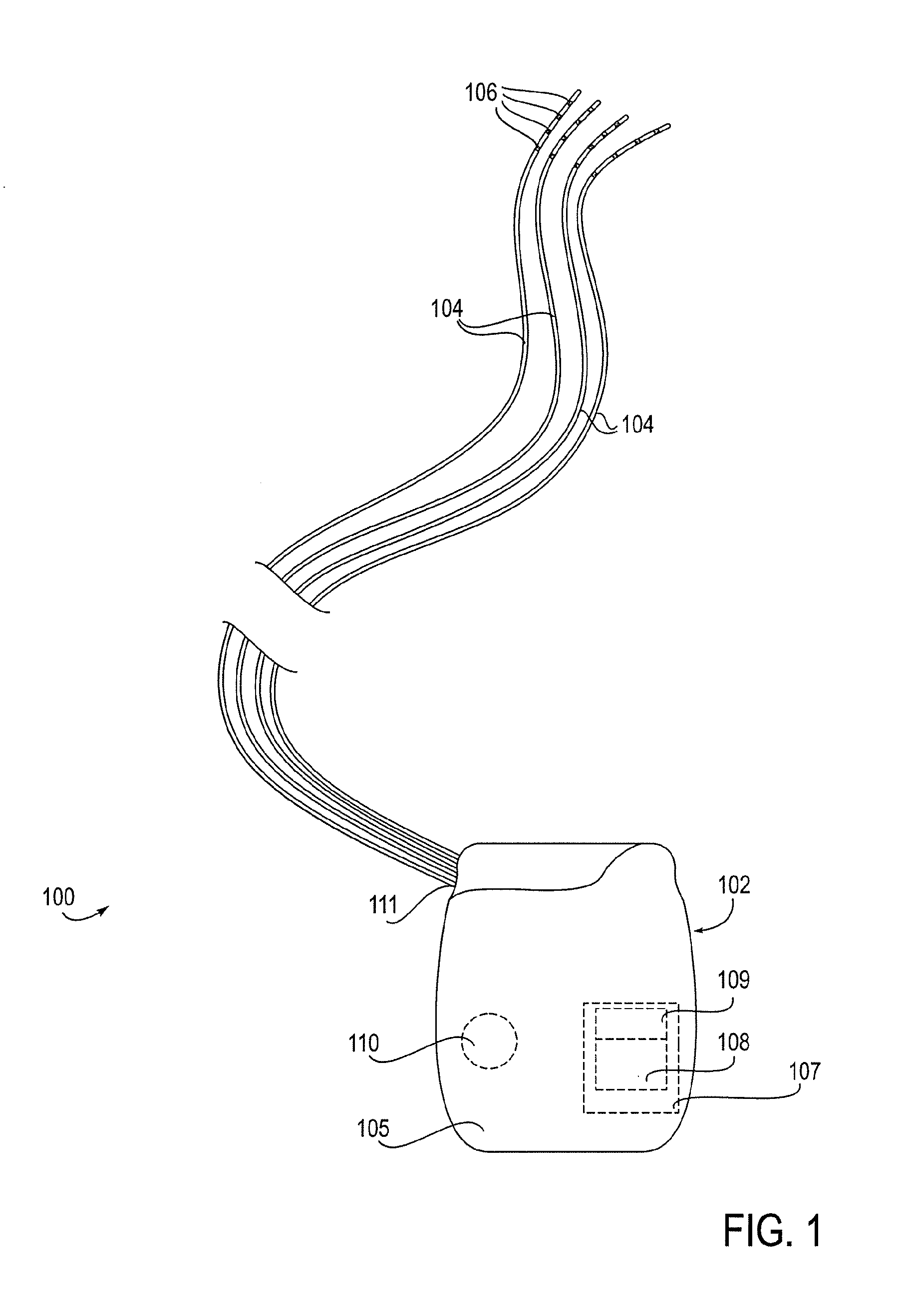Neuromodulation of subcellular structures within the dorsal root ganglion
- Summary
- Abstract
- Description
- Claims
- Application Information
AI Technical Summary
Benefits of technology
Problems solved by technology
Method used
Image
Examples
experiment 2
[0073] Depolarization current (100 ms) was injected through the recording electrode in amplitudes that increased by 0.2 nA increments separated by 2 s intervals. Firing patterns induced by depolarization were recorded simultaneously. Electrical treatment of the DRG (or comparable time without treatment) was followed by a similar sequence of steps. The effect of electrical treatment on the number of APs generated by depolarization was compared to the effect of time alone in control neurons.
[0074]Statistics: Data are shown for mean±SEM.
[0075]Referring to FIG. 9, an in vitro model 10 was devised for recording neuronal membrane events during field stimulation of dorsal root ganglia (DRGs). DRG excised from adult rats were placed in a custom chamber 12 perfused with oxygenated artificial CSF at 37° C. Sharp electrode impalement provided trans-membrane potential (Vm). Neuronal activation was produced by direct depolarization through the recording electrode 14 or by conduced action potenti...
PUM
 Login to View More
Login to View More Abstract
Description
Claims
Application Information
 Login to View More
Login to View More - R&D
- Intellectual Property
- Life Sciences
- Materials
- Tech Scout
- Unparalleled Data Quality
- Higher Quality Content
- 60% Fewer Hallucinations
Browse by: Latest US Patents, China's latest patents, Technical Efficacy Thesaurus, Application Domain, Technology Topic, Popular Technical Reports.
© 2025 PatSnap. All rights reserved.Legal|Privacy policy|Modern Slavery Act Transparency Statement|Sitemap|About US| Contact US: help@patsnap.com



